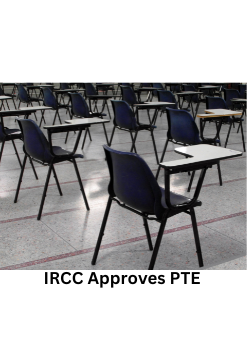If you are a nurse seeking to register and practice in primarily English-speaking countries, or for academic purposes, OET certification is an essential first step – it is a test that qualifies you as proficient in the English language for professional use.
Here at Hurray, we offer the best online OET coaching guaranteed to help you gain success in the exam! Individual-oriented and flexible, and bolstered by our 8 years of experience, you will find our OET online course to be well-suited to your needs – with the benefit of accessing it from wherever you are! (ielts coaching institute)
In this blog post, we will break down the OET writing test for you – along with a few tips and strategies suggested by our experienced and expert trainers, spearheading our OET online training programme. (ielts best institute)
*Update for Covid-19: For all of you staying home, we are here to assist you with your OET preparation during lockdown. All of our blog content can be used as frameworks guiding your practice and study efforts – so you can make the most of this time!
About the Writing Test
The test, involving letter-writing, is designed to test your ability to communicate via writing, drawing on actual professional circumstances.
If you register for OET in the Nursing professional category, one of the options that your writing test may consist of includes a discharge letter.
In addition to the letter prompt, you will be provided with supporting details in the form of case notes, and other relevant documentation.
Check out our post OET Writing: Letter-writing for more details about the writing test.
Criteria
This is the most important aspect of Letter Writing. There are six new grading criteria in OET Writing. They are:
1) Purpose- The candidate must state the purpose of their letter and make it very clear at the very beginning. The purpose should always be included in the first paragraph of the letter. You must state as to why the letter was written, as well as include what action needs to be taken by the reader. (ielts training centre)
2) Content- Here you must include all the relevant and necessary information in an accurate manner. In this part of the letter you can score highly provided that you write the required length. The given length is between 180-200 words. The word count itself is a guide and will not be penalized for writing below the word limit or over it. The most important thing here is to include information that is relevant and necessary. The important thing is to make sure you include everything that is necessary. For this, analyze your task properly.
3) Conciseness and Clarity- This is associated with the Content criterion, where you are given scores for including relevant information. For this criterion, you will be marked for any irrelevant information you include. You must remember that this has to be related to the purpose of your letter mentioned in paragraph one. If it is not coherent then this will make the purpose of your letter less clear.
4) Genre and Style- This criterion assesses what kind of language you have used to write your letter. Remember there are different types of letters that are written as times to medical professionals or non- medical professionals. You must write using a formal style, and your language should reflect the kind of audience to whom you are addressing the letter. Medical terms or certain technical abbreviations are appropriate for a a medical professional. The same cannot be used when writing to a parent. Your writing should also be clinical, precise and non-judgemental. (ielts classes near me)
5) Organisation and Layout - The organization of ideas is extremely important in letter writing. You must organize your letter properly. Use proper paragraphs to identify different points. The whole idea is that the information should be properly sorted so that retrieving the information will not be a problem.
6) Language - This means that all the linguistic features will be tested here. The focus is on aspects of vocabulary and grammar. Tenses, articles, prepositions, verbs, sentences, punctuation, vocabulary, etc. is graded under this criterion. The focus is on how you use these aspects to properly express your ideas and highlight the requirement of the task. The range of grammar used in the letter is not directly assessed, only the accuracy. (best ielts coaching center)
All of the criteria now have a maximum grade of 7, except for Purpose which will be graded out of 3.
Performing the task
-
Preparation
You will be given a time limit of 45 minutes to complete the task. It is suggested that the first 5 minutes be used to prepare for the task, with the remaining 40 minutes reserved for writing.
Keep the following guidelines in mind:
-
Read the prompt carefully and skim-read the case notes.
-
Identify the purpose of the letter – you will have to identify whether the letter is a discharge, transfer or referral. This is usually evident in the prompt itself – where the type of letter will be directly named OR you can infer the purpose from the information given.
-
Identify and make quick notes of the information which is relevant, keeping in mind the prompt and the purpose of the letter.
-
Number your selected points, to form a particular order – you will use this order to structure your letter.
-
Remember that not all the information will be of use to a particular reader, depending on the purpose of the letter – choose your points carefully and with discretion.
-
Furthermore, you have to adhere to a word-limit of 180-200 words – this is possible if you successfully select only the most relevant information.
-
Writing
We suggest the following guidelines:
-
begin with a clear introduction, wherein the purpose of the letter is immediately apparent
-
divide your letter into short, clear paragraphs – depending on the nature and amount of content
-
there must be a clear concluding paragraph, typically containing a call to action
-
while the information in the case-notes will be given in point-form, you are expected to write in full sentences and paragraphs
-
any abbreviations or profession-specific vocabulary must be used, keeping in mind the target reader’s expected ability to understand
OET does not specify any particular letter-format or template – the only stipulation is that the format utilised must be clear and well-structured. See our post OET Writing: Letter-writing for more details.
Solved example
The following letter is based on a genuine OET test prompt. It is indicative only and can be modified as required.
Prompt:
In the case notes: “Mr Gerald Baker is a 79-year-old patient on the ward of a hospital in which you are Charge Nurse.”
Details: osteoarthritis requiring left total hip replacement surgery, care required post discharge from hospital
Task: “Using the information in the case notes, write a letter to Ms Samantha Bruin, Senior Nurse at Greywalls Nursing Home, 27 Station Road, Greywalls, who will be responsible for Mr Baker’s continued care at the Nursing Home.”
Quick tip: Here, it is not explicitly stated that this is a letter of discharge. However, based on the information given i.e. that the patient is being discharged post-surgery, it can be inferred that this is a letter of discharge. (ielts study abroad)
Letter:
Date: 6 September 2019
To,
Ms Samantha Bruin
Greywalls Nursing Home, 27 Station Road
Greywalls
Subject: regarding discharge and care for patient Mr Baker
Dear Ms Bruin,
I am writing with regards to the discharge of your patient Mr Gerald Baker from the hospital, following his elective total left hip-replacement surgery for osteoarthritis on 4 September. He is to return to the nursing home tomorrow, 7 September.
Post-surgery, Mr Baker’s mobility has shown improvement. He is showing occasional disorientation, probably due to the effects of the anesthesia, and is being monitored. His care at the hospital involves daily dressings of the surgery incision site, an exercise programme focused on range of motion, stretching and strengthening, and occupational therapy. (IELTS Coaching Centre in Bangalore)
The plan of care and monitoring to be followed post his discharge to the nursing home, includes the monitoring of his medications, particularly the intake of Panadeine Forte, the preservation of skin integrity and the continuation of the exercise program.
The equipment required for his care includes a wheelie-walker and wedge pillow, which will both be provided by the hospital. He will also require a toilet raiser, which is being hired for 2 weeks from a local medical supplier.
The staples are to be removed in 2 weeks on 21 September. Mr Baker is also to have follow-up FBE and UEC tests at City Hospital Clinic.(ielts preparation classes near me)
Do contact me if you require any clarifications regarding Mr Baker’s discharge.
Thank you.
Yours sincerely,
Nurse.
Tips
-
Understand the writing task.
-
Identify the type of letter
-
Understand the case notes.
-
Spend around 3-4 minutes carefully reading and understanding the case notes.
-
Select case notes.
-
Choose only relevant information.
-
Plan your writing structure.
-
Organize case notes
-
Transform the case notes into a letter of between 180-200 words.
-
Use abbreviations where required.
-
Use the correct format
-
Mention the name if given otherwise only mention designation
For more how-to’s like these, and plenty of opportunities to put them into practice, you can depend on our OET online classes.
To learn more, reach out to us via email: info@hurrayedutech.com or call us on: 8971357938.











Post Comments